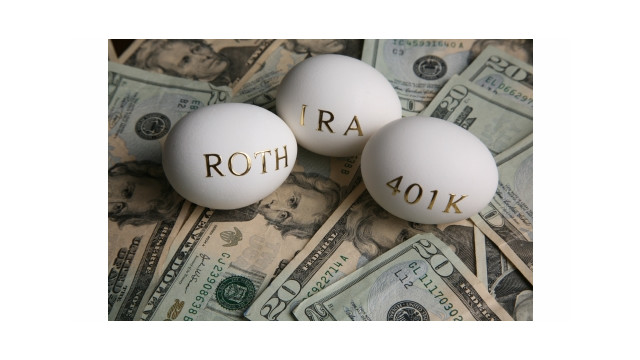Benefits
The Best Retirement Savings Options for 20-Somethings
Your 20s are the optimal time to take advantage of compound growth. A dollar invested at 25 has 45 years to grow before you retire at 70. A dollar invested at age 40 has just 30 years. Sounds like a big “so what?” It’s anything but.
Mar. 30, 2021

According to the IRS, in 2018 more than 34 million taxpayers in their 20s were eligible to contribute to an individual retirement account (IRA). Fewer than 5% did so.
Of course, some may be doing some retirement saving through work. But even if you’re a 20-something with a workplace 401(k), an IRA — specifically a Roth IRA — is the smartest retirement move to make. The IRS estimates only 1.25 million 20-somethings contributed to a Roth IRA in 2018.
If you’re a parent, grandparent, aunt or uncle who is looking for a way to help a 20-something build financial security, keep in mind it’s totally kosher to gift them money to contribute to a Roth IRA as long as they have earned income equal to their Roth IRA contribution.
The blown opportunity of not saving in a Roth IRA
The absurdity of our retirement system is that it requires people in their 20s to choose to save money they won’t use for 40 or 50 years, and the same system does a lousy job explaining why waiting a decade (or two, or three) to focus on retirement saving is a huge miss.
Here’s the sales pitch: Your 20s are the optimal time to take advantage of compound growth. A dollar invested at 25 has 45 years to grow before you retire at 70. A dollar invested at age 40 has just 30 years. Sounds like a big “so what?” It’s anything but. That time is the secret sauce of investing for retirement.
Invest $100 a week starting at age 25 and keep it up for 45 years, and you will have nearly $882,000, assuming a conservative 5% annualized rate of return. Start at age 40 and you will have less than $362,000 at age 70. If you wait until age 40 to get focused, you will need to save about $245 a week to end up with the same $882,000. That essentially means doing a lot more of the heavy lifting.
When you start at age 25, the sum of all those $100 weekly deposits will be $234,000. Start at 40 and you end up needing to save $380,000 to end up with the $882,000. That nearly $150,000 difference is simply the cost of not using compound growth to its full advantage.
Why Roths rule
IRAs, and many 401(k)s, come in two flavors: traditional or Roth. The only difference is when you pay tax. With a Roth IRA you pay the tax upfront because the money you invest is from income that has already been taxed.
That’s a smart deal when you’re young, and likely in a low tax bracket. You don’t need a tax break on the money you are contributing. What you want to focus on is what happens when you withdraw the money. In retirement, every dollar you pull out of a Roth IRA will be 100% tax-free.
In retirement every dollar you withdraw from a traditional IRA or 401(k) will be taxed as ordinary income.
Roth IRA or workplace plan? It depends
If you’ve got a workplace retirement plan, you may not need to focus on a Roth IRA. Emphasis on may.
A decision tree to sort through:
- Is there a matching employer contribution for your 401(k)? In that case, you definitely want to participate in the workplace plan. It would be nuts to turn down this bonus.
- Is there a Roth 401(k) option? Most big employers now offer the choice between a Roth 401(k) or a traditional 401(k). If you have a Roth 401(k) and you have a match, you don’t need to consider a Roth IRA. With one caveat: If your Roth 401(k) offers mutual funds with high annual expense ratios (say, more than 0.50%), you might consider limiting your contribution to what you need to earn the maximum matching contribution, and then do the rest of your saving in a Roth IRA. It’s easy to find index mutual funds and exchange-traded funds for an IRA that have expense ratios below 0.10%.
- Got a match, but no Roth 401(k) option? OK, you definitely want to participate in the workplace plan to get the match. But maybe limit your contribution to whatever is necessary to pocket the maximum employer match. (HR will tell you the percentage of your salary you need to contribute to reach the max match.) And then do additional saving in your own Roth IRA.
- No match? If you have a Roth option, it can still make sense to do your retirement saving at work, as long as your plan offers low-cost mutual funds.
- No match and no Roth option? You def should be focusing on the Roth IRA first.
How to set up your own Roth IRA account
Any discount brokerage such as Fidelity, Schwab or Vanguard will be happy to help you set one up and get rolling.
The key is to sign up from the get-go to have a weekly/monthly/quarterly deposit sent from your checking account into your IRA. Automatic transfers are free on both ends.
The IRA contribution limit for 2021 is $6,000 for everyone younger than 50. That works out to $115 a week. If you can pull that off, fantastic. But you can work your way up to that, too. In 2018, the average annual Roth contribution for 20-somethings was close to $3,000.
=========
(Rate.com/research/news covers the worlds of personal finance and residential real estate.)
©2021 Rate.com. Visit at rate.com. Distributed by Tribune Content Agency, LLC.
